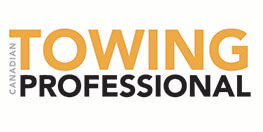Taking training into the future
By Cindy MacDonald
Continuous learning is fundamental to success, in business and in life, says Patrice Marcil, customer experience director for North America at Axalta Coating Systems. “Things keep changing, and if you don’t adapt your skills and your knowledge to the changes, you are just not going to be able to follow through. That is not only in the automotive industry. That’s in life, too.” The respected trainer is also chairman of the Canadian Collision Industry Forum (CCIF), and brings to the table more than 40 years of experience in the industry. From his early days working for his father at a collision repair shop while in high school, Marcil moved to teaching collision repair for a decade after graduating from Université de Québec à Trois Rivières. He believes teaching is “an important social duty.” Later, he moved on to consulting, always working in the collision repair industry, eventually securing a position at Axalta about 20 years ago. Training is his forte. A strong advocate for training, Marcil believes the process must be ongoing, whether it is handson learning in a shop where skills development turns knowledge into an ability, or management training acquired by reading, online or in a classroom. Marcil believes that, in some cases, less is more. “Training is not about consumption, not about how much do I need to learn, so I am going to do it all this year – that’s not how it works. It’s much more efficient to learn five or 10 minutes a day than to stop everything and try to learn a lot in one week – especially with adults.” “I prefer shorts bits of info. A few minutes every day is so much better. You just need to have a plan.”
WHAT BUSINESS OWNERS SHOULD BE LOOKING AT IN TERMS OF ROI, IS THE “RETURN ON IGNORANCE.” IF YOU THINK THAT EDUCATION IS EXPENSIVE , WHAT ABOUT IGNORANCE?
VIDEO DELIVERS LESSONS WHEN NEEDED
Marcil notes that the YouTube phenomenon has created new opportunities for learning. “There are a lot more ways to access information, and YouTube videos are providing a way to access the how-to of technology on the web.” It wasn’t so long ago that the only way to get training was to go to the companies or manufacturers or to school, he recalls. “Video is a big deal, especially in this industry,” says Marcil. “People like to touch, but they definitely like to see.” Axalta, a major supplier of refinish coatings, has had success doing live virtual training sessions. “We have a broadcasting studio and from there we broadcast training classes almost every day for up to 90 minutes to everywhere in North America,” Marcil explains. The technicians who tune in are then asked to take a video of themselves performing certain tasks. The next day, the technicians’ videos are analyzed by the instructor and all other participants taking the program.
“We do this so they can see each other, which is part of the natural learning process and something the generation we are dealing with wants,” he continues. “People are sharing their videos openly. Learning from peers is a big thing.”
The other key point about collision repair training in 2019 is immediacy. “We are dealing with the now. Technicians don’t necessarily want to learn about something three weeks before applying it. They want to know at the point of use and at the moment of need.”
MAKE THE MOST OF THE INVESTMENT
Recognizing there is an investment of both time and money in training, business owners want to know what their return is. “Does the training mean you are capable of doing what you plan to do? Is your business plan going to work? I think that’s the return on investment to me,” says Marcil. “There is no magical mathematical equation.” What business owners should be looking at in terms of ROI, he says, is the “return on ignorance.” “If we think that education is expensive, then what about ignorance? That’s a visual we use.” One poor uneducated structural, mechanical or calibration repair can equal a fatality, or multiple fatalities, Marcil states, with emphasis. Collision repair facilities should have a development plan for employees, he counsels. As a first step, “I would tell shops they need to make sure they have the proper role description for their technicians. They need objectives of where they want their technicians to grow.” The plan should be reviewed every six months and it should be led by management but include the employees. “The employees need to have some kind of accountability for their own development. That is not the role of the employer,” he says. “It’s up to employees to engage.” As well, the business must have the right equipment. “It’s the whole package…shops need to have a good vision of where they want to be and how they are going to get there.” He adds, “At the end of it all, it is not what is taught that counts, it is what is being learned. Training is an old term. Now, we should be talking about learning and development.” TD






















